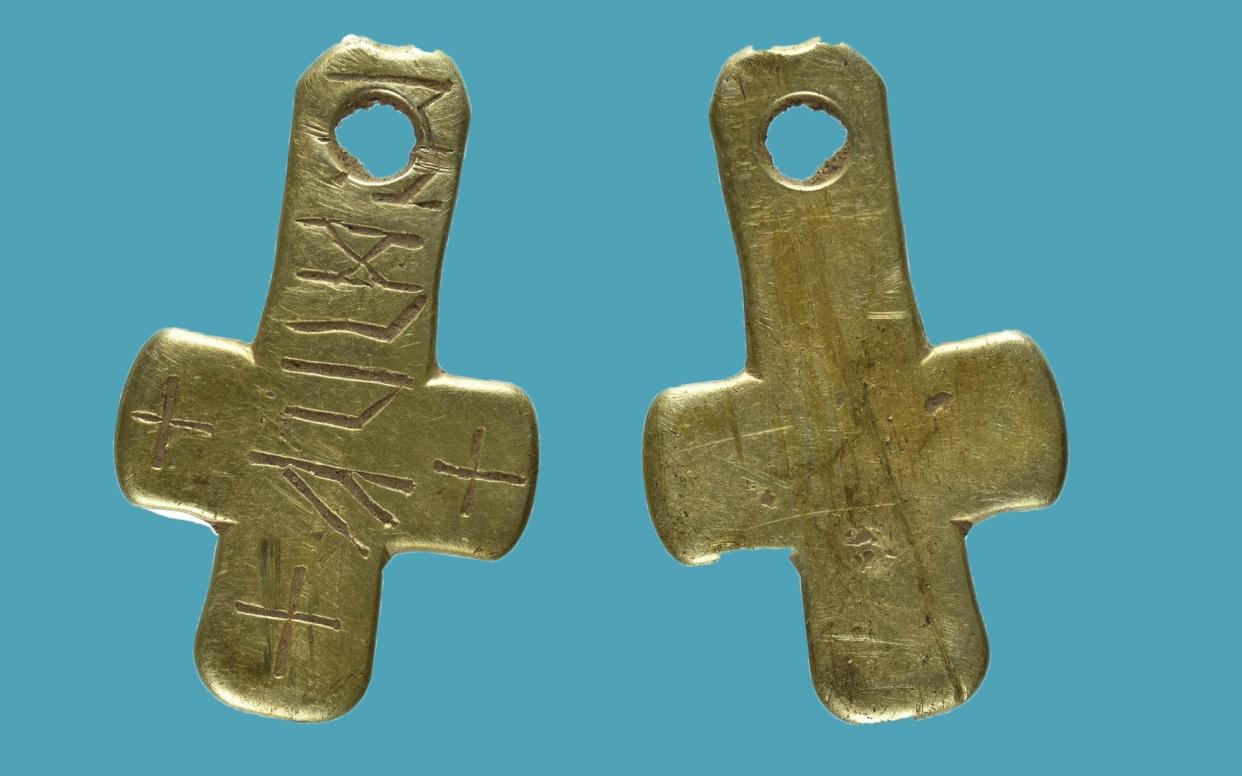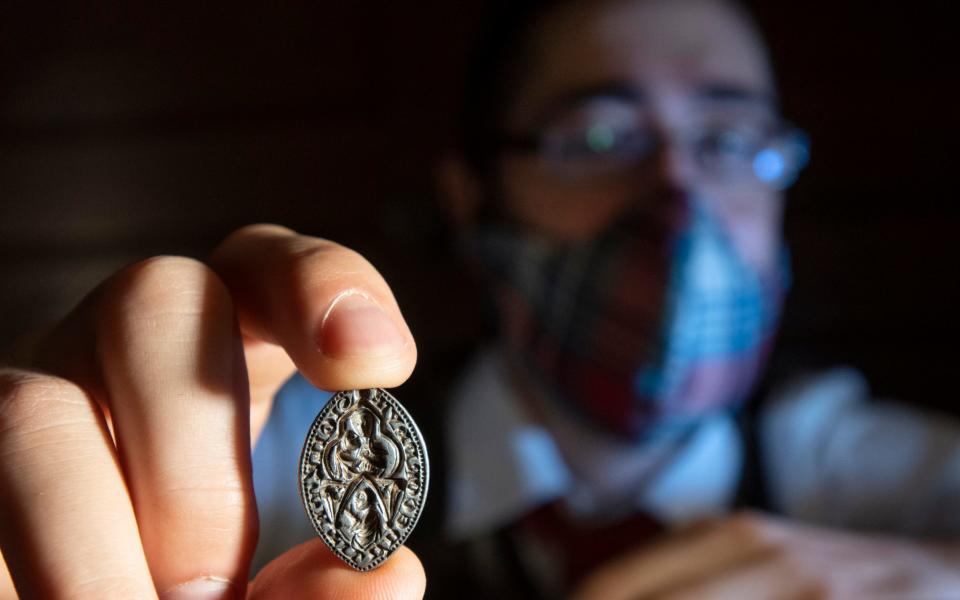Golden pendant etched with runes hints at an ancient Anglo Saxon mystery

“Who was Eadruf?” historians are asking, after the discovery of a cross-shaped pendant which revealed a new and “mysterious” Anglo-Saxon name.
Detectorists found an 8th or 9th-century golden cross on the shores of the River Tweed, near Berwick, in 2020 - an area that was formerly part of a religious centre in the Kingdom of Northumbria.
Studies of the pendant have revealed it was etched with runes that spell out “Eadruf”, a previously unknown name that experts have described as “etymologically mysterious”.
While “Ead” may mean something like “fortune” or “happiness”, Prof John Hines, an archaeologist and linguist, has said: “No personal name element ‘ruf’ can be identified in any Germanic language.”
The discovery of the inscribed pendant, announced as part of the British Museum's annual summary of finds from across the UK, has prompted speculation as to the identity of the only Eadruf ever recorded.
The use of gold to craft the cross suggests that its owner was likely a high-status figure, with possible links to Anglo-Saxon royalty or monastic communities.
Golden cross was one of 50,000 finds made in 2020
Prof Hines, of the University of Cardiff, has suggested that the unique moniker “Eadruf” could be an early Medieval nickname formed from the contraction of a name popular with “the upper social strata in Northumbria in the 9th century”.
It is possible, Prof Hines has said, that the newly unearthed epithet derives from “Eardwulf” - a name shared by notable historical figures, including a deposed and exiled king of Northumbria.
It has also been suggested that the owner of the mysterious golden cross was Eardwulf of Lindisfarne, who was bishop of the monastic community when it began a long migration from its historic base on Holy Island to Durham in the 9th-century.
While the identity of Eadruf remains a mystery, Ben Westwood, Durham finds liaison officer, who is responsible for recording archaeological discoveries, said the pendant owner was “clearly embedded in … the early medieval, early Christian fabric of the North East region”.

The golden cross was one of 50,000 finds made in 2020. They also included a 13th-century silver matrix used to imprint wax seals, with the name of a high-status medieval woman known as “Matilda de Cornhill”, and a hoard of 6,500 Roman coins.

